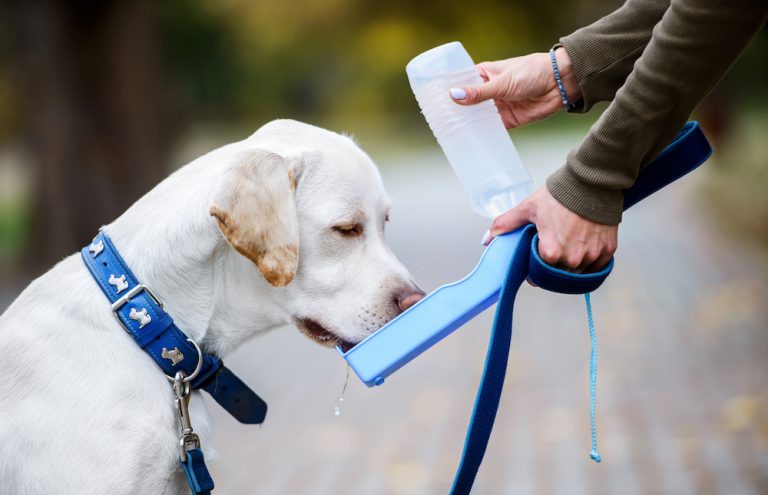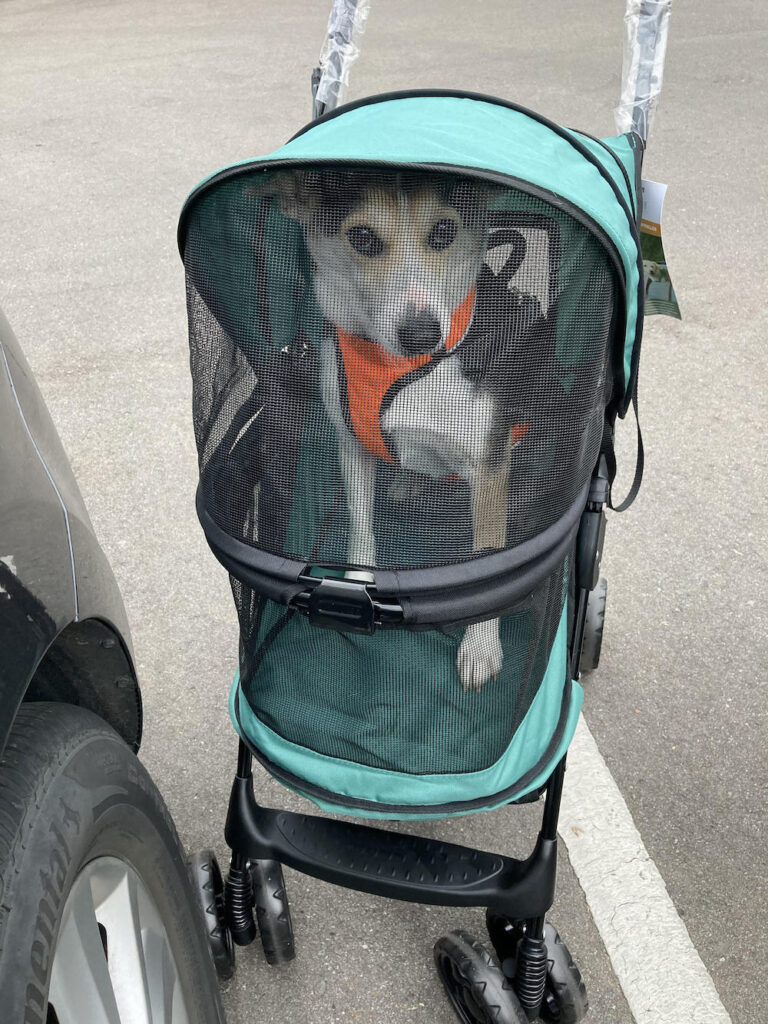Dogs thrive on routine, and you may have refined your everyday dog-care efforts down to horological levels of precision. But have you thought about what you’d do if something went wrong?
It’s no fun to worry about fires, earthquakes, floods, hurricanes, tornados, and all the other terrible things that can happen with little warning—but if you’re prepared, you stand a better chance of keeping yourself and your loved ones, including your dogs, safe in an emergency. Here are some steps you can take ahead of time.
1. Make an emergency kit for your dog
If you unexpectedly need to evacuate your home, you might not think of everything your pup needs in the moment. You can save yourself some stress by packing emergency items in advance. Here are some essentials that you should keep somewhere accessible, in containers that you can transport with you.
- Water
- Food (more on that below)
- First-aid supplies, including any medicines
- A leash and collar
- If your dog might get cold, a jacket or sweater
- A carrier
- Poop bags
- Any ID, licenses, and proof of up-to-date vaccinations
- A photo of you and your dog together, in case you become separated. This can help others identify your dog, and prove that they belong to you.
For more ideas, you can check with sources like the Red Cross and the United States Department of Homeland Security.
2. Have emergency food options
No matter what’s going on, your dog needs to eat. Depending on the specific circumstances at hand, your feeding schedule may be affected—but you can take measures so that your friend will have enough food.
If you’re feeding fresh, losing power to your refrigerator or freezer could disrupt your routine. And if infrastructure issues prevent your deliveries from arriving on time, you might have to improvise for a while.
The CDC has advice for how to keep your frozen and refrigerated food edible during a power outage. Generally, food can stay colder longer if it’s packed closely with other cold items in a freezer, refrigerator, or cooler. Placing food in a freezer bag can add insulation. If you feed The Farmer’s Dog, check to make sure that your food is still cold to the touch before feeding. And, if it smells bad or the pack has puffed up, toss it—better safe than sorry.
If you’re on the go and have the room, you can bring some food packed in a cooler with ice or cold packs. Remember to follow the same guidelines to judge its freshness.
If you have access to ingredients and a kitchen, but can’t get your delivery, you can home-cook temporarily for your dog. Here are some recipes. This isn’t a great long-term solution, as it’s very difficult to formulate a nutritionally complete diet for a dog in your own kitchen, but it’s okay in the short term.
You shouldn’t let the perfect be the enemy of the good. Humans’ disaster provisions often include canned and dried food products that wouldn’t make the healthiest lifelong diet, and the main thing here is to keep your dog fed. Stocking a supply of something shelf-stable—freeze-dried food, for example—can be a useful backup for scenarios in which you don’t have a refrigerator or a freezer.
3. Put up a rescue alert sticker
If a fire or earthquake strikes, you might not be home—or you could become separated from your dog. Organizations like the ASPCA offer stickers that notify first responders that animals in your home need rescuing. Putting one on your front door could save a life.
4. Start training now
Can your dog tolerate a carrier? Are they comfortable wearing a basket muzzle? Will they come when called? Will they follow your instructions if you tell them to go to a secure spot like a designated closet, bathroom, or crate? Skills that might sometimes seem merely “nice to have” can be crucial in a disaster, and may even determine whether your dog is allowed to be with you in certain settings. Start training them now so that they’ll be ready if the need arises. Use treats—if your dog is engaged and having fun, it’ll be easier for them to learn.
5. Figure out where you and your dog can stay
Unfortunately, dogs are not welcome everywhere. What may be only an inconvenience when you are running errands can become a bigger problem if you can’t stay in your own home. Scout out hotels and any known shelters along a potential evacuation route and see if any permit dogs to stay with humans. If you can’t find any, seek out friends, family, a boarding facility, or others who can look after your pet in the event that you need to be apart temporarily.
It’s also a good idea to have an emergency contact—talk to someone you know and trust who can care for your dog if you become incapacitated or unavailable, and keep their contact info on you and your pup in case it’s necessary.
6. Keep in mind: if it’s dangerous to you, it’s dangerous to your dog
Whatever is threatening you, it might be hazardous to your pup as well. Keep your dog away from flood water—which may be contaminated—and debris, which could injure them. If there is smoke from fires, do your best to limit how much they breathe; close your windows, filter the air with an air conditioner, and keep outdoor walks to a minimum when the air quality is unhealthy. To the extent you can, help keep your dog happy and entertained with indoor activities like training tasks and puzzles.
In the midst of all of this, remember that dogs are keen observers of humans and will take cues from you. Some situations are scary—but if you can project calm and positivity, that may reassure your dog.











